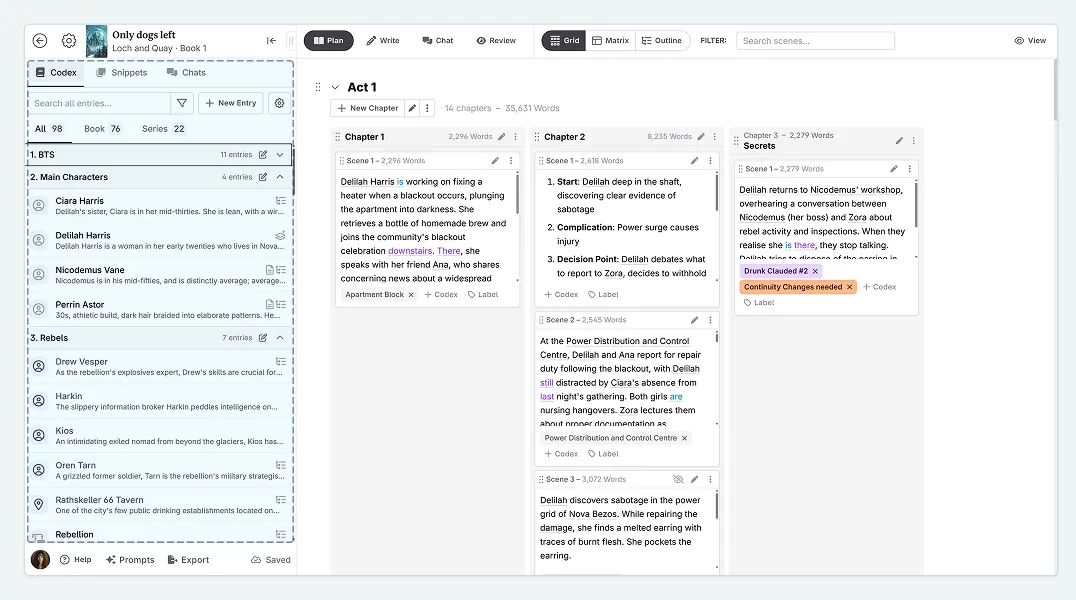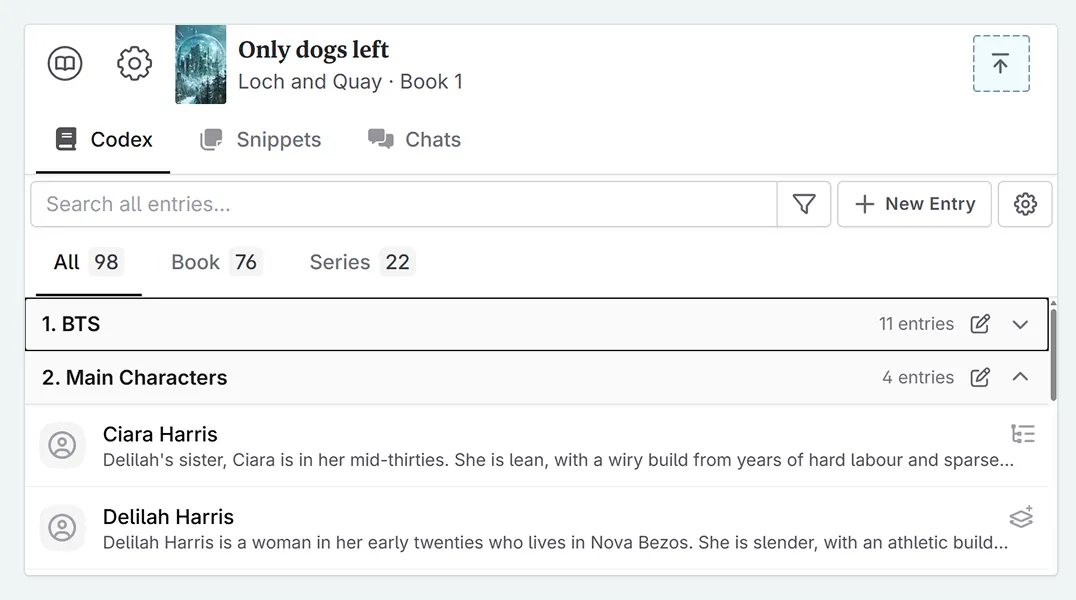The Codex
Learn about organising your codex, what to include, and when to give the AI information.
In the world of writing, organization is key. And for keeping track of all the essential details of your story, Novelcrafter’s Codex is here to save the day.
The Codex is a powerful tool that allows you to store and access vital information about your characters, locations, objects, and more.
It is a treasure trove where you can store the information about your story and acts as a central hub for essential story elements. From character descriptions to detailed location settings to intricate objects, the Codex has got you covered.
You can find the Codex in the left hand menu.

If you are on a mobile device, or have a small screen, you might only see the codex, and not any other interface - to minimise this, press the symbol of an arrow and line.
